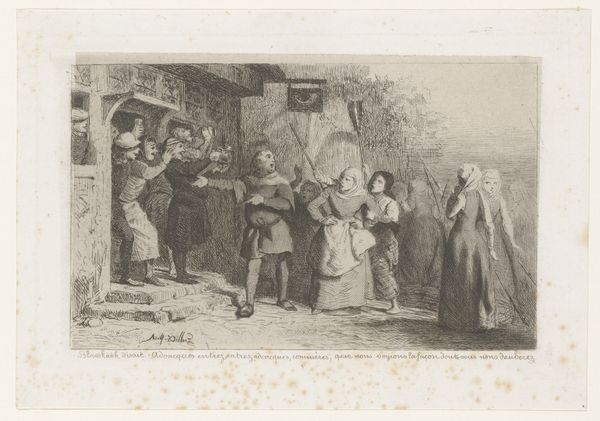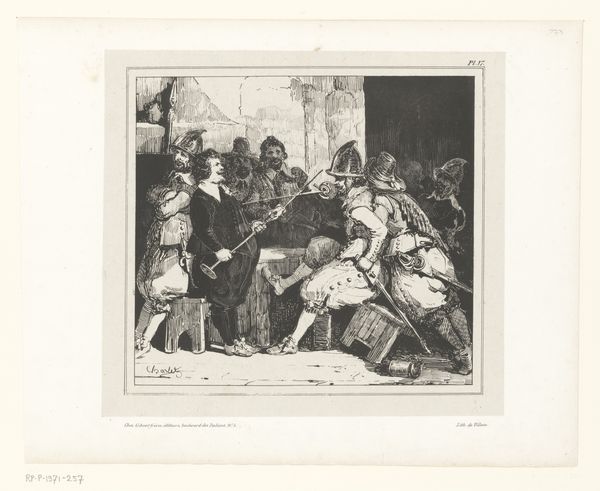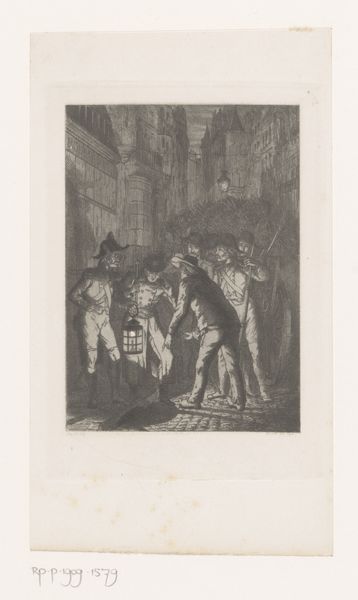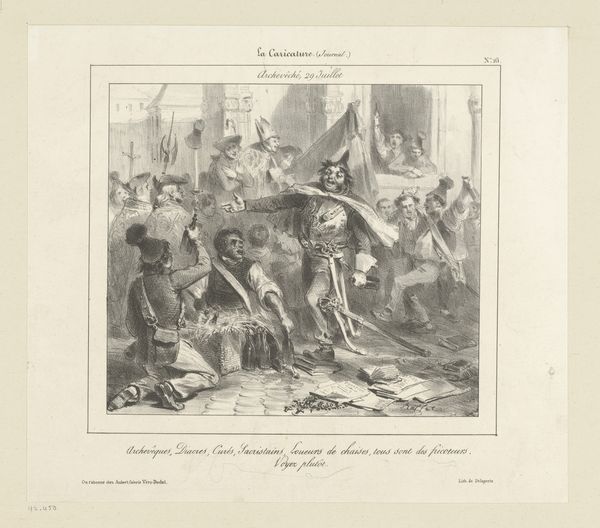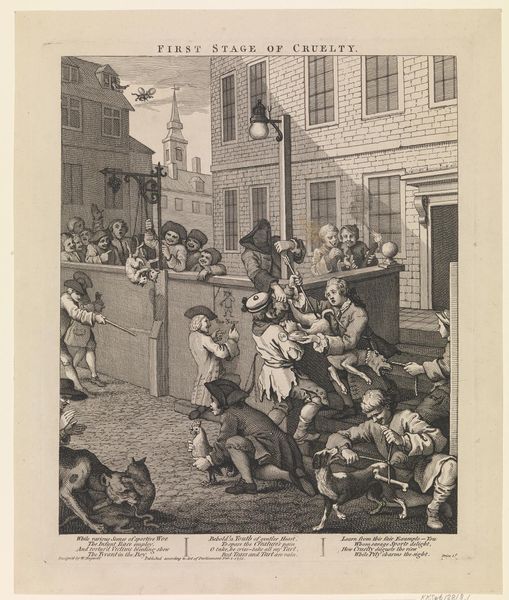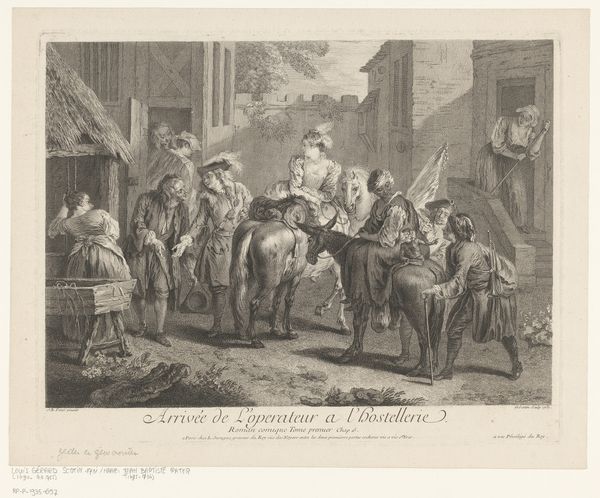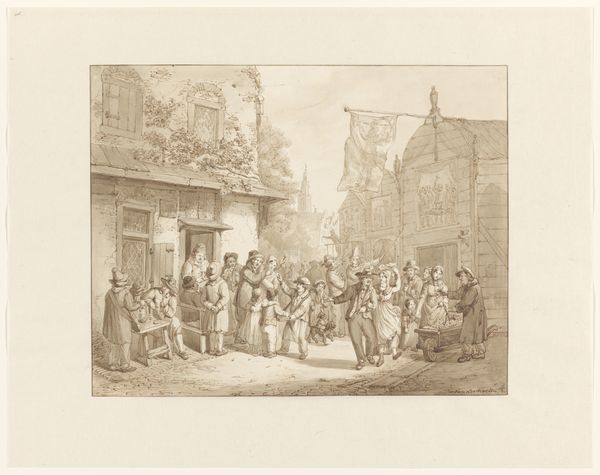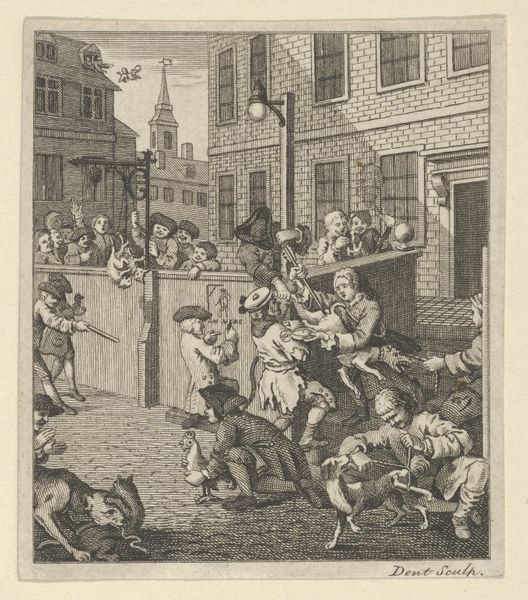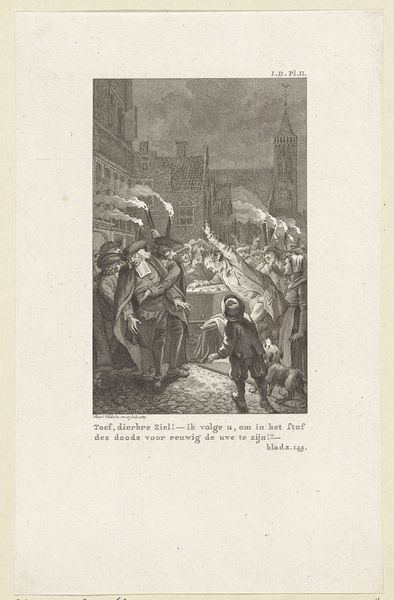
Straatscène met Damon met rugzak en zijn schoonvader met roede c. 1734s
0:00
0:00
print, engraving
#
narrative-art
#
baroque
# print
#
old engraving style
#
figuration
#
cityscape
#
genre-painting
#
engraving
Dimensions: height 333 mm, width 367 mm
Copyright: Rijks Museum: Open Domain
Curator: Welcome. Before us hangs an intriguing engraving, likely dating from the 1730s, titled "Straatscène met Damon met rugzak en zijn schoonvader met roede," which translates roughly to "Street scene with Damon with backpack and his father-in-law with a rod." It's attributed to Nicolas de Larmessin the Third. Editor: It’s quite busy. The overwhelming sense is of a somewhat chaotic street scene, packed with figures, the light distributed fairly evenly... the composition guides the eye deep into the image. There's a push and pull between the crowded foreground and the architecture receding in perspective. Curator: Indeed. Larmessin utilizes hatching and cross-hatching techniques expertly to achieve that recession and to define the various textures, from the smooth stone buildings to the fabrics of the clothing. Observe how the density of lines shapes form and suggests volume. It speaks to a highly developed formal language, characteristic of Baroque sensibilities. Editor: I find it equally compelling to think about the materiality of prints themselves and the labor that went into producing multiple copies. This image would have circulated quite widely, making it a fascinating lens into the social and cultural context of its time. You have bodies mingling, drinking and likely spreading rumors throughout the market and class system. This isn’t only high art; it's communication. What was life actually like? Curator: Certainly, and one cannot disregard the narratives unfolding here. The figures form discrete groups, hinting at individual stories intersecting within the larger cityscape. Note Damon, the presumed protagonist, burdened with his backpack. His discomfort becomes a focal point—a node in this network of social relations. The question begs, What’s he up to with the suspicious figure in the center? Is there something romantic in nature, or perhaps nefarious with the stern man wielding the roede. Editor: Agreed, and thinking materially about that "roede" that has such clear connections to physical, manual work gives us insight. It looks less a tool of domestic discipline and more to my point—a piece of industrial material like timber—perhaps what a porter of his father in-law worked with on any given day to survive? That, to me, highlights social relations of the era and the social classes at hand represented. Curator: That said, I still see within these class boundaries, as well as his clear formal prowess, Larmessin has organized an almost diagrammatic vision, structured by strong verticals and diagonals which work to structure the emotional landscape of the image itself. Editor: Very well stated! It shows that while we may see different layers to Nicolas de Larmessin the Third's image—be they labor and society or its Baroque structural diagram—these layers intertwine to paint us a truly beautiful world into eighteenth century life.
Comments
No comments
Be the first to comment and join the conversation on the ultimate creative platform.
